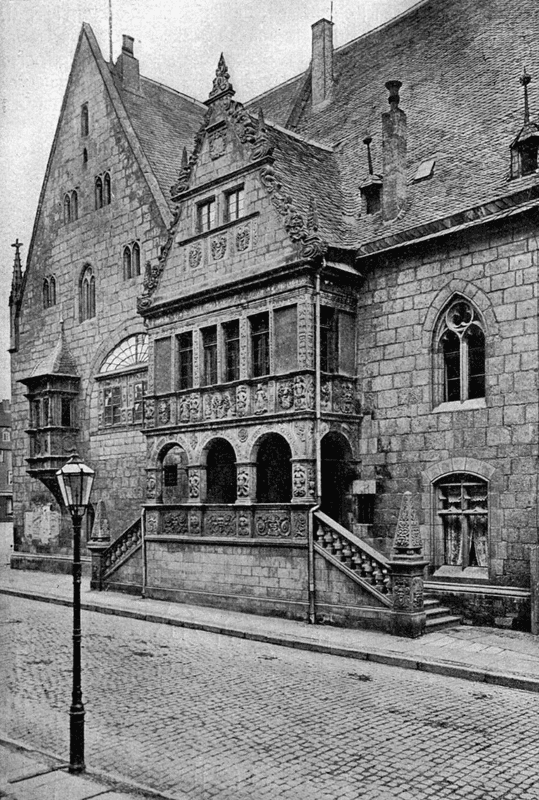
Councillaube
Ratslaube
Schwab writes:The emergence of the mighty building belongs to different eras and three centuries have given him his current appearance; the oldest part, the west side with the two gables comes from the end of the 14th century, the middle building attached to him the 15th, and the porch in front of the east gable may have been created in the 16th century. The south side of the building is enlivened by a small bay window from 1541 and a porch, a so-called council bower, which was added to the gable end in 1663. In the transitional style from Gothic to early Renaissance, both show an excellent imitation of the half-timbered building and woodcutting in sandstone and appear highly picturesque in their lively ornamentation.The city hall interior today serves the municipal administration and the military and police station, but from its history only the cross vaults with the low columns and the angular staircases and corridors, on which life walks in, from the powerful footsteps the past has fled. In front of the Gothic portal of the western side leading to the wooden market, a stone guest looks down on the wooden market. He has long acquired civil rights, because at the beginning of the 14th century he moved into Halberstadt. It is the Roland at the town hall.





